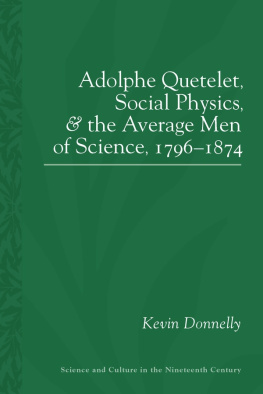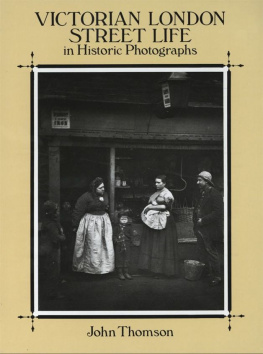
ADOLPHE
HENRI-BENJAMIN CONSTANT DE REBECQUE was born in Lausanne in 1767, and was educated privately and at the universities of Erlangen and Edinburgh. He had several liaisons with older women, including Madame de Charrires and Mme de Stal. Germaine de Stal, one of the most brilliant and influential women in Europe, maintained a powerful hold on him for years, their relationship being marked by passionate jealousies and reconciliations. When Constants politics incurred Napoleons disfavour, he shared Mme de Stals exile in 1803. In 1813 he published from Hanover a pamphlet attacking Napoleon, but, nevertheless, took office under Napoleon during the Hundred Days. After the second restoration, he went to London where he published Adolphe in 1816. In Adolphe Constant turned his own experience into one of the most penetrating pieces of psychological analysis of relations between man and woman. He returned to France in 1818, where he became famous as the leader of the Liberal opposition in the Chamber and as a political journalist. His Journaux intimes were not published fully until 1952; Le Cahier Rouge, containing a fascinating account of his youth, was published in 1907; and Ccile in 1931. Benjamin Constant died in Paris in 1830.
LEONARD TANCOCK spent most of his life in or near London, apart from a year as a student in Paris, most of the Second World War in Wales and three periods in American universities as visiting professor. Until his death in 1986, he was a Fellow of University College, London, and was formerly Reader in French at the University. He prepared his first Penguin Classic in 1949 and, from that time, was extremely interested in the problems of translation about which he wrote, lectured and gave broadcasts. His numerous translations for the Penguin Classics include Zolas Germinal, Thrse Raquin, The Dbcle, LAssommoir and La Bte Humaine; Diderots The Nun, Rameaus Nephew and DAlemberts Dream; Maupassants Pierre and Jean; Marivauxs Up from the Country; Prvosts Manon Lescaut; La Rochefoucaulds Maxims; Voltaires Letters on England; Madame de Svigns Selected Letters and The Goncourt Journals.
Benjamin Constant
ADOLPHE
TRANSLATED WITH AN INTRODUCTION
BY LEONARD TANCOCK
PENGUIN BOOKS
PENGUIN BOOKS
Published by the Penguin Group
Penguin Books Ltd, 80 Strand, London WC2R 0RL , England
Penguin Putnam Inc., 375 Hudson Street, New York, New York 10014, USA
Penguin Books Australia Ltd, 250 Camberwell Road, Camberwell, Victoria 3124, Australia
Penguin Books Canada Ltd, 10 Alcorn Avenue, Toronto, Ontario, Canada M4V 3B2
Penguin Books India (P) Ltd, 11 Community Centre, Panchsheel Park, New Delhi 110 017, India
Penguin Books (NZ) Ltd, Cnr Rosedale and Airborne Roads, Albany, Auckland, New Zealand
Penguin Books (South Africa) (Pty) Ltd, 24 Sturdee Avenue, Rosebank 2196, South Africa
Penguin Books Ltd, Registered Offices: 80 Strand, London, WC2R 0RL , England
www.penguin.com
First published 1816
This translation first published 1964
This translation copyright Leonard Tancock, 1964
All rights reserved
Except in the United States of America, this book is sold subject to the condition that it shall not, by way of trade or otherwise, be lent, re-sold, hired out, or otherwise circulated without the publishers prior consent in any form of binding or cover other than that in which it is published and without a similar condition including this condition being imposed on the subsequent purchaser
ISBN: 978-0-14-196034-0
CONTENTS
INTRODUCTION
T HE French are a self-consciously intellectual race; they have a horror of the unexplained, they must know where they stand, and why. That is why they are penetrating critics, of themselves as well as of others, and unsatisfactory politicians, for politics are not rational, but empirical and opportunist. It is also why the most typical works of French literature are works which plumb the depths of the human character, its passions, its motives, and expose the myriad shifts and disguises of its self-centredness. Whether it be Montaigne, La Rochefoucauld, or Gide, clear self-knowledge is the aim. And because that is more important than anything else, the characteristic French masterpiece (though of course the discursive Montaigne is an exception) is economical in form, avoiding all by-products or dawdling by the wayside, all merely picturesque effects, all poetic flights put in for their own sake.
A uniquely French expression of this ideal is the small, economical novel of uncompromising analysis of character and motive, usually autobiographical, usually dealing with a tragic love-affair, tragic because the stark facts of human nature cannot logically be worked out and death must be called in to end an impossible situation. Everything not bearing upon the main problem is ruthlessly pruned, and the result is a microcosm of the human condition. Some or all of these characteristics may be found in the miniature masterpieces which are not the least gift of France to the literature of the modern world: Manon Lescaut, Ren, Adolphe, La Confession dun enfant du sicle, Dominique,La Porte troite, La Symphonie pastorale, are only a few examples.
Such works of fiction, often very thinly disguised autobiographies, are touchstones which reveal to which of two groups a critic, university lecturer or writer of a doctoral thesis belongs. Which group is sheep and which goats is of course a matter of opinion. The scholars comb libraries, manuscripts, parish registers and suchlike in an endless checking of the text against the biographical facts. The aesthetes are really only concerned with the creative processes of the artist who has utilized the purely personal and local as material to transmute into universal truth recognizable by every reader as his own actual or potential experience, his own instincts and character. These ask themselves what possible object can be achieved by niggling about names, places, and dates, while the scholars, of course dismiss the aesthetes as quite unscientific generalizers, purely subjective essayists.
The case of Benjamin Constant and Adolphe has occupied scholars and aesthetes alike for a century and a half. But the story should be a lesson in humility for the omniscient scholars and in respect for science and documents on the part of the vague aesthetes. Benjamin set out precise, detailed information about himself in three texts, apart from Adolphe, none of which was available until many years after his death and two not until very recently. The first, known as Le Cahier rouge, simply because the manuscript is in a red notebook, is a frankly autobiographical fragment of which the real title is Ma Vie, and which sets out Benjamins life from his birth in 1767 until 1787. This notebook passed, after the death of Benjamins widow, through the hands of various members of the Constant family, and was not published until 1907. The second, Ccile, probably written in 1811, had an even more delayed appearance. Benjamin led such a nomadic life that boxes of his papers were deposited here and there for years, and it seems probable that the manuscript of Ccile was left in Germany from 1813 until 1826, when he had his things moved to Lausanne. After his death in 1830 this manuscript passed with other papers into the possession of relatives, and it was not available for publication until 1951. Ccile
Next page









